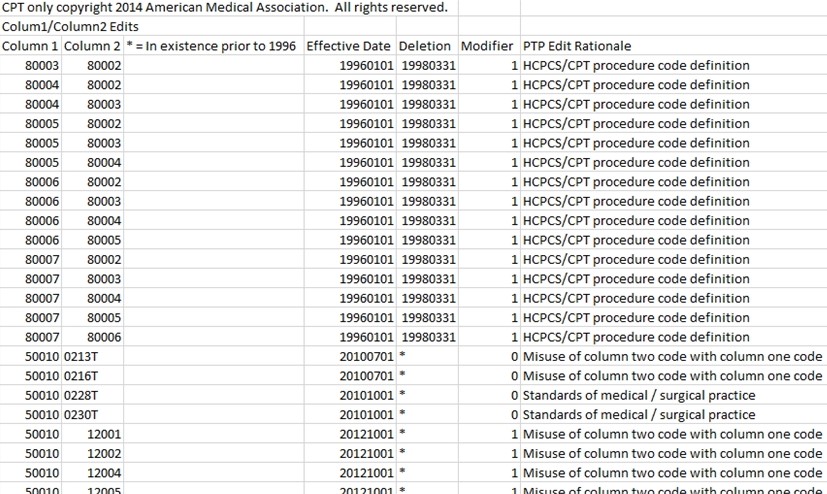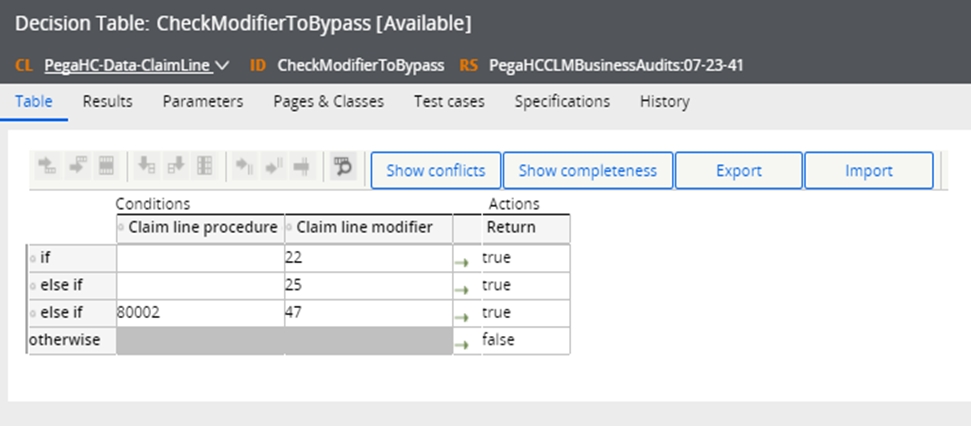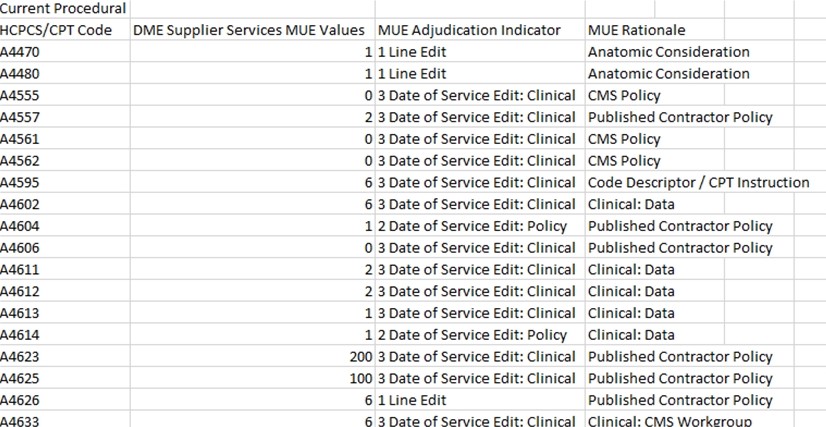NCCI edits (PTP and MUE)
The edits provided as part of the National Correct Coding Initiative provide validations to on multiple procedure billing (PTP) and maximum units per procedure (MUE). The Centers for Medicare and Medicaid Services (CMS) provides the information listing the procedures and units in downloadable files.
The PTP edits determine which procedure codes cannot be billed together on the same claim encounter. Different procedure code files exist for hospital and professional claims. The audits not only look at the current claim, but also claims in history submitted by the same provider to ensure that the claims haven’t been split to avoid the edit being set. The PTP (previously called Mutually Exclusive edit) edit file included edits where two procedures could not be performed at the same patient encounter because the two procedures were mutually exclusive based on anatomic, temporal, or gender considerations.
An encounter is defined as the same practitioner (rendering provider) on the same date of service for the same member. The files from CMS contain pair of codes. If the code in column 1 exists, then the claim cannot contain the code in column 2 on another line for the same date of service unless an appropriate modifier has been submitted and modifiers are allowed to override this edit.
In this situation, the procedure on the first line would pass the edit, and the second procedure would set the PTP audit. The code pairs have effective and end dates in the file and the claim dates of service must be within those dates. If a modifier can be present to override the event, the PTP table indicates this. A decision table is available to show the available modifiers that can override the audit. The decision table will include both a procedure code and a modifier. If either the modifier and/or modifier/procedure code combination exists, then the audit will bypass.
An example of the PTP file is below:

The modifier column in the file indicates if a modifier can override the audit. The modifier codes are detailed below:
0 – Not allowed
1 – Allowed
9 – Not Applicable
If a modifier override is allowed, the CheckModifierToBypass decision table is reviewed. This looks to see if the procedure code and/or modifier listed enables an override. If so, then the decision table returns a true statement.

The MUE edits (Medically unlikely edits) identify the maximum units of service a provider would typically bill for a single date of service. CMS developed Medically Unlikely Edits (MUEs) to reduce the paid claims error rate for Part B claims. An MUE for a HCPCS/CPT code is the maximum units of service that a provider would report under most circumstances for a single beneficiary on a single date of service. Not all HCPCS/CPT codes have an MUE. A sample of the CMS MUE file is pictured below.

If the PTP Audit is reported, event code SBA-0015 is listed on the claim. If the MUE Audit is reported, event code SBA-0016 is listed on the claim.

Previous topic Interim bill edits Next topic Hospital readmission audits
